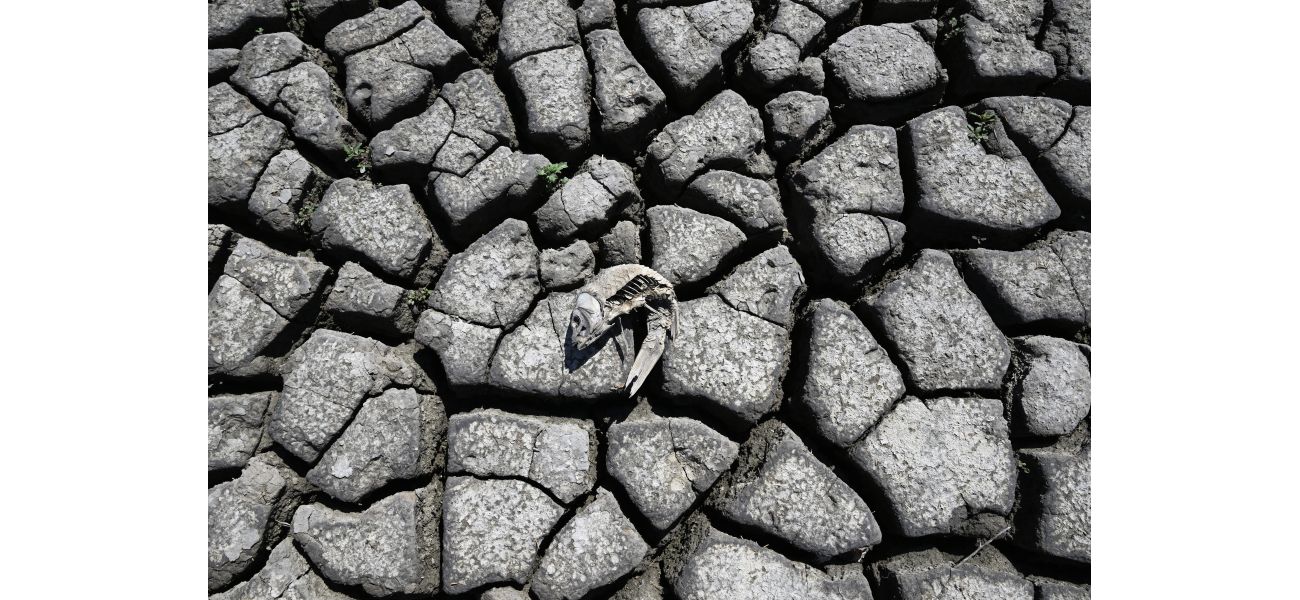Colorado could experience drought every 6 years instead of every 1,000 due to climate change, per study.
Future droughts will differ from past ones, according to Joel Lisonbee, a scientist at the University of Colorado Boulder.
November 24th 2024.

Throughout the past two years, Colorado and the rest of the Western United States have been facing a severe drought that has caused significant damage to the environment and put communities at risk. This extreme drought has resulted in dry fields for farmers, lower water levels in reservoirs, and intense wildfires that have threatened homes and lives. It has also caused dangerously low levels in streams and rivers.
This type of exceptional drought, which has been seen from 2020 to 2022, historically occurs less than once every 1,000 years. However, recent research published in the journal Science Advances suggests that this may become a more frequent occurrence. The study predicts that if humans continue with business as usual, similar megadroughts could happen once every six years by the end of the century. This is due to the rising temperatures caused by climate change.
Joel Lisonbee, a scientist with the University of Colorado Boulder, explains that the droughts of today and the future will not be the same as those of the past. He and a team of researchers from UCLA and the National Oceanic and Atmospheric Administration (NOAA) wanted to determine if the recent drought was a natural weather variation or if it was influenced by climate change. Their findings showed that the higher temperatures caused by climate change made the conditions much worse.
Even if there are no changes in precipitation patterns, the study suggests that the rising temperatures alone will lead to increased drought. The droughts will last longer, cover larger areas, and become more extreme as the climate continues to warm. In fact, during the recent drought from 2020 to 2022, 61% of its severity was due to increased evaporation caused by higher temperatures, while only 39% was due to lack of precipitation.
The effects of this drought were seen throughout Colorado, with all counties experiencing severe drought in 2020 and 21 counties on the Western Slope declared in a state of emergency by Governor Jared Polis in 2021. The dry conditions also contributed to the state's three largest wildfires on record, which burned over 541,000 acres combined. Even after these fires were contained, the damage to the environment caused mudslides and flash flooding, resulting in the closure of major highways and loss of life.
A prime example of the drought's impact was the Marshall fire in Boulder County in 2021, which was fueled by the dry conditions even in December. It destroyed over 1,000 homes and became the most destructive wildfire in Colorado's history. The smoke from these fires, along with others across the West, also led to some of the worst air quality on the Front Range.
The study also highlights how the increased temperatures have created a cyclical feedback loop. As the atmosphere warms, it can hold more water vapor, leading to more evaporation from the surface and less precipitation. This means that even if we were to build bigger reservoirs, it would not be enough to prevent the effects of the drought. The only solution is to stop the rise in temperatures by reducing greenhouse gas emissions.
In short, the recent drought in Colorado and the Western U.S. was exacerbated by climate change and serves as a warning for the future. It is crucial that we take action to reduce our impact on the environment and prevent these extreme droughts from becoming a regular occurrence.
This type of exceptional drought, which has been seen from 2020 to 2022, historically occurs less than once every 1,000 years. However, recent research published in the journal Science Advances suggests that this may become a more frequent occurrence. The study predicts that if humans continue with business as usual, similar megadroughts could happen once every six years by the end of the century. This is due to the rising temperatures caused by climate change.
Joel Lisonbee, a scientist with the University of Colorado Boulder, explains that the droughts of today and the future will not be the same as those of the past. He and a team of researchers from UCLA and the National Oceanic and Atmospheric Administration (NOAA) wanted to determine if the recent drought was a natural weather variation or if it was influenced by climate change. Their findings showed that the higher temperatures caused by climate change made the conditions much worse.
Even if there are no changes in precipitation patterns, the study suggests that the rising temperatures alone will lead to increased drought. The droughts will last longer, cover larger areas, and become more extreme as the climate continues to warm. In fact, during the recent drought from 2020 to 2022, 61% of its severity was due to increased evaporation caused by higher temperatures, while only 39% was due to lack of precipitation.
The effects of this drought were seen throughout Colorado, with all counties experiencing severe drought in 2020 and 21 counties on the Western Slope declared in a state of emergency by Governor Jared Polis in 2021. The dry conditions also contributed to the state's three largest wildfires on record, which burned over 541,000 acres combined. Even after these fires were contained, the damage to the environment caused mudslides and flash flooding, resulting in the closure of major highways and loss of life.
A prime example of the drought's impact was the Marshall fire in Boulder County in 2021, which was fueled by the dry conditions even in December. It destroyed over 1,000 homes and became the most destructive wildfire in Colorado's history. The smoke from these fires, along with others across the West, also led to some of the worst air quality on the Front Range.
The study also highlights how the increased temperatures have created a cyclical feedback loop. As the atmosphere warms, it can hold more water vapor, leading to more evaporation from the surface and less precipitation. This means that even if we were to build bigger reservoirs, it would not be enough to prevent the effects of the drought. The only solution is to stop the rise in temperatures by reducing greenhouse gas emissions.
In short, the recent drought in Colorado and the Western U.S. was exacerbated by climate change and serves as a warning for the future. It is crucial that we take action to reduce our impact on the environment and prevent these extreme droughts from becoming a regular occurrence.
[This article has been trending online recently and has been generated with AI. Your feed is customized.]
[Generative AI is experimental.]
0
0
Submit Comment





